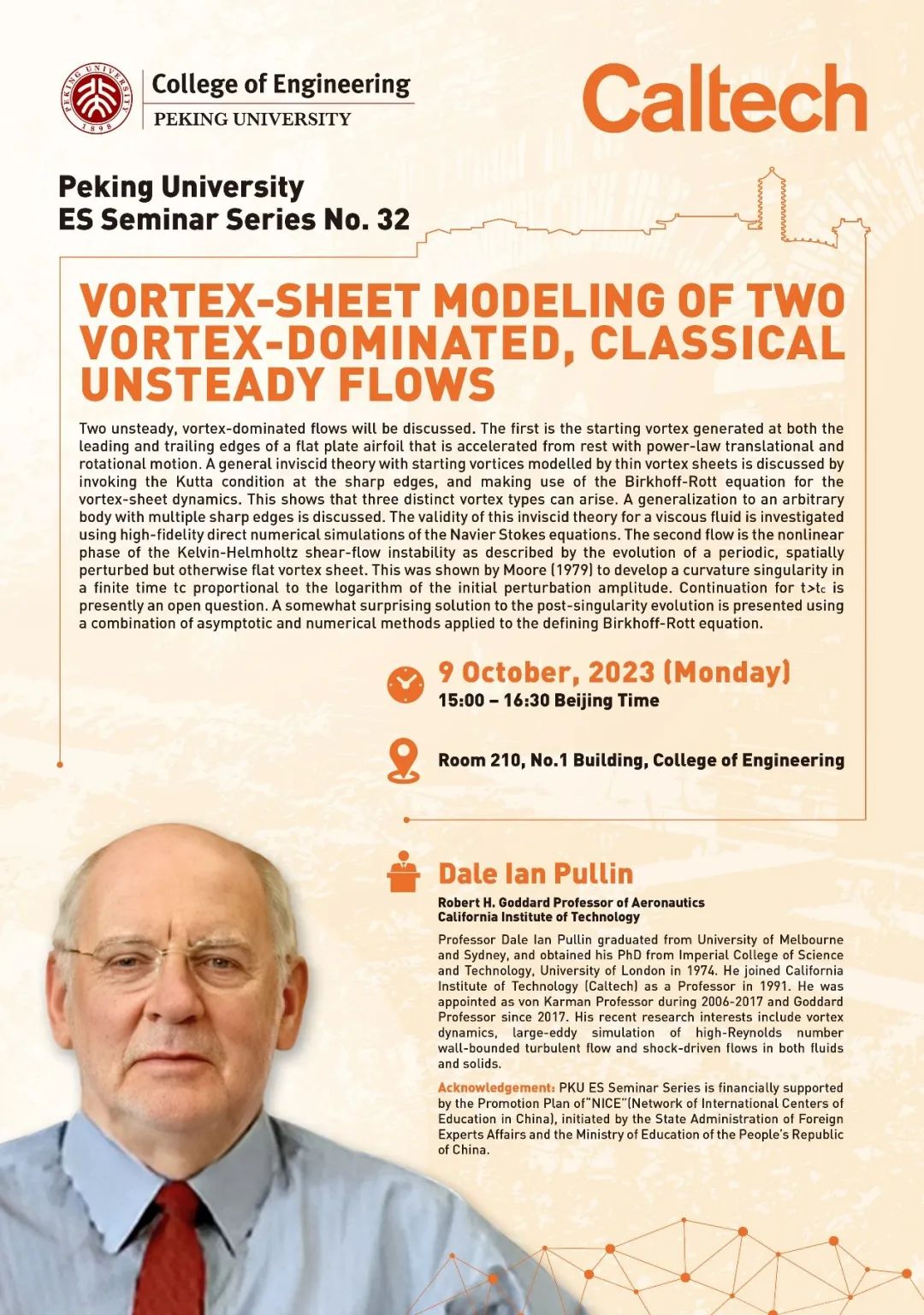Speaker: Dale Pullin, Robert H. Goddard Professor of Aeronautics, California Institute of Technology
Time: 15:00-16:30 p.m., October 9, 2023, GMT+8
Venue: Room 210, No.1 Building, College of Engineering
Abstract:
Two unsteady, vortex-dominated flows will be discussed. The first is the starting vortex generated at both the leading and trailing edges of a flat plate airfoil that is accelerated from rest with power-law translational and rotational motion. A general inviscid theory with starting vortices modelled by thin vortex sheets is discussed by invoking the Kutta condition at the sharp edges, and making use of the Birkhoff-Rott equation for the vortex-sheet dynamics. This shows that three distinct vortex types can arise. A generalization to an arbitrary body with multiple sharp edges is discussed. The validity of this inviscid theory for a viscous fluid is investigated using high-fidelity direct numerical simulations of the Navier Stokes equations. The second flow is the nonlinear phase of the Kelvin-Helmholtz shear-flow instability as described by the evolution of a periodic, spatially perturbed but otherwise flat vortex sheet. This was shown by Moore (1979) to develop a curvature singularity in a finite time tc proportional to the logarithm of the initial perturbation amplitude. Continuation for t>tc is presently an open question. A somewhat surprising solution to the post-singularity evolution is presented using a combination of asymptotic and numerical methods applied to the defining Birkhoff-Rott equation.
Biography:
Professor Dale Ian Pullin graduated from University of Melbourne and Sydney, and obtained his PhD from Imperial College of Science and Technology, University of London in 1974. He joined California Institute of Technology (Caltech) as a Professor in 1991. He was appointed as von Karman Professor during 2006-2017 and Goddard Professor since 2017. His recent research interests include vortex dynamics, large-eddy simulation of high-Reynolds number wall-bounded turbulent flow and shock-driven flows in both fluids and solids.
Source: College of Engineering
